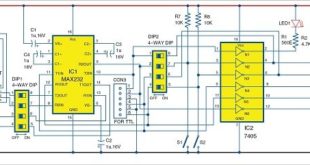Switch mode power supplies (SMPSs) are used in a range of applications as an efficient and effective source of power. This is in major part to their efficiency. For anybody still working on a desktop, look for the fan output in the central processing units (CPU). That’s where the SMPS is. SMPS offers advantages in terms of size, weight, cost, efficiency and overall performance. These have become an accepted part of electronics gadgets. Basically, it is a device in which energy conversion and regulation is provided by power semiconductors that are continuously switching “on” and “off” with high frequency.
The different kinds
DC-DC converter
The primary power received from AC main is rectified and filtered as high voltage DC. It is then switched at a huge rate of speed and fed to the primary side of the step-down transformer. The step-down transformer is only a fraction of the size of a comparable 50 Hz unit thus relieving the size and weight problems. We have the filtered and rectified output at the secondary side of the transformer. It is now sent to the output of the power supply. A sample of this output is sent back to the switch to control the output voltage.
Forward converter
In a forward converter, the choke carries the current when the transistor is conducting as well as when it’s not. The diode carries the current during the OFF period of the transistor. Therefore, energy flows into the load during both the periods. The choke stores energy during the ON period and also passes some energy into the output load.
Flyback converter
In a flyback converter, the magnetic field of the inductor stores energy during the ON period of the switch. The energy is emptied into the output voltage circuit when the switch is in the open state. The duty cycle determines the output voltage.
Self-Oscillating Flyback Converter
This is the most simple and basic converter based on the flyback principle. During the conduction time of the switching transistor, the current through the transformer primary starts ramping up linearly with the slope equal to Vin/Lp. The voltage induced in the secondary winding and the feedback winding make the fast recovery rectifier reverse biased and hold the conducting transistor ON. When the primary current reaches a peak value Ip, where the core begins to saturate, the current tends to rise very sharply. This sharp rise in current cannot be supported by the fixed base drive provided by the feedback winding. As a result, the switching begins to come out of saturation.
Basic working concept of an SMPS
A switching regulator does the regulation in the SMPS. A series switching element turns the current supply to a smoothing capacitor on and off. The voltage on the capacitor controls the time the series element is turned. The continuous switching of the capacitor maintains the voltage at the required level.
Design basics
AC power first passes through fuses and a line filter. Then it is rectified by a full-wave bridge rectifier. The rectified voltage is next applied to the power factor correction (PFC) pre-regulator followed by the downstream DC-DC converter(s). Most computers and small appliances use the International Electrotechnical Commission (IEC) style input connector. As for output connectors and pinouts, except for some industries, such as PC and compact PCI, in general, they are not standardized and are left up to the manufacturer.
Why SMPS
Like every electronic gadget, SMPS also involve some active and some passive components. And like each of those gadgets, it has its own advantages and disadvantages.
Let’s start with why you should go for an SMPS
Then there’s the bad set
The video below from Jacob Dykstra takes you through one.
What would the future hold?
In the future, we could have more efficient SMPS aimed at a better converter doing the most effective conversion process. The focus areas for designers in making SMPS efficient would be:
SiC Schottky diode bench-marked at 300-600 V range of operation can be used as an active device in place of a transistor with high switching frequency. Why don’t you give it a try? In a lab. Under expert guidance maybe…
This article was first published on 25 August 2017 and was updated on 7 December 2018.
This content was originally published here.








